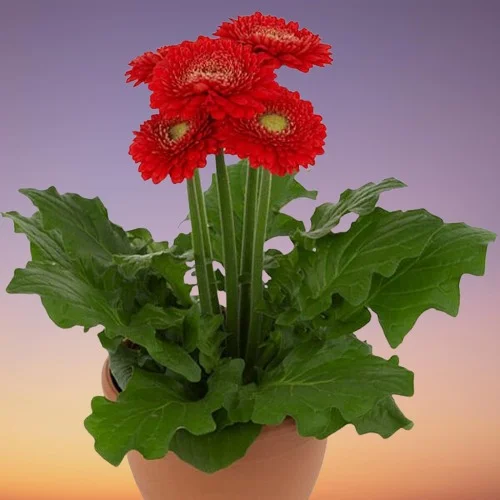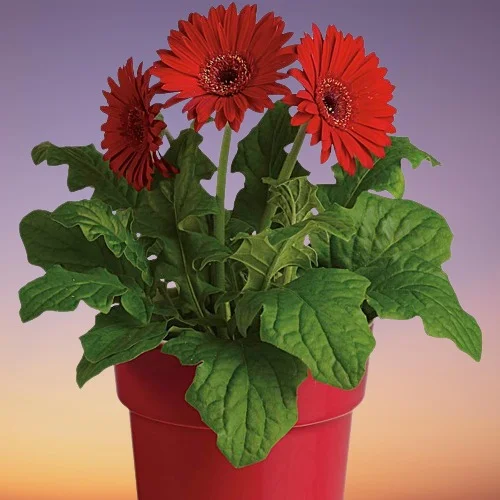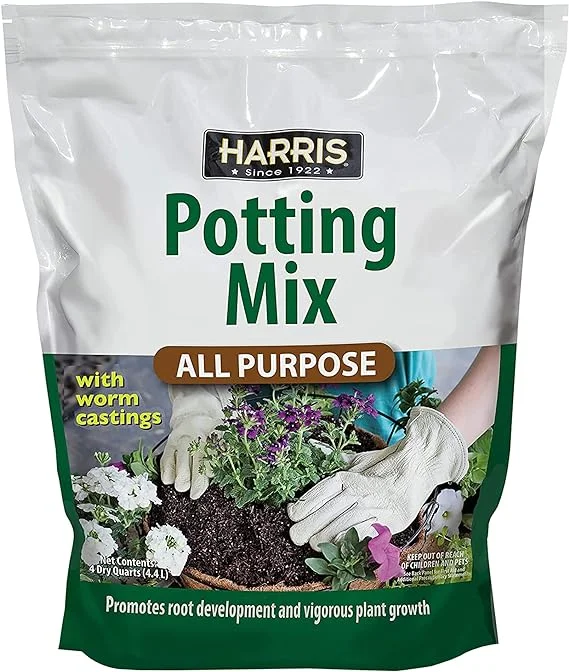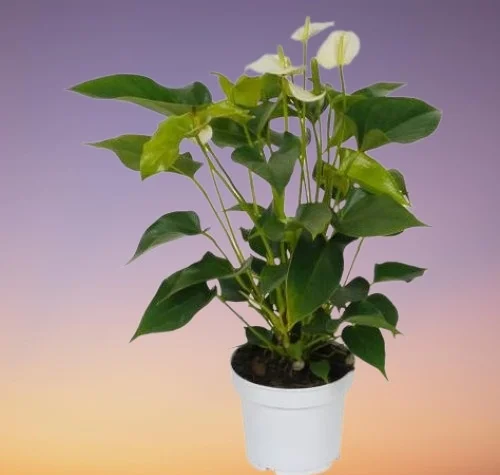10 Reasons Why Gerbera Daisy is Dying and How to Revive It
Some links in this post may be affiliate links
Gerbera Daisy is dying due to incorrect growing conditions like too little light, poor quality soil, poor feeding, root-rot, pest infestations, cold drafts, low humidity, incorrect watering among others.
Gerbera Daisy also called Barbeton Daisy or Transvaal Daisy is among the popular flowering plants for the well-lit spot in the home. Its beautiful flowers are a pleasant sight in any space.
Gerbera Daisy known by the botanical name Gerbera jamesonii is non-toxic to both humans and pets as indicated by ASPCA. It is also a good indoor air cleaner which gets rid of formaldehyde and benzene as outlined on the NASA Clean Air Study.
Gerbera Daisy is easy to grow when given the right growing conditions. Barbeton Daisy blossoms in bright light with 6-8 hours of direct sunlight, average warmth of 15-250C, moderate humidity and moderately moist, rich, well-drained soil coupled with regular feeding during the growing season. Read more on Gerbera Daisy (Gerbera jamesonii) Care Indoors and Propagation.
If the proper growing conditions are not met, your Gerbera Daisy may begin to die. We have outlined herebelow 10 reasons why a Gerbera Daisy may die and their remedies.

10 Reasons Why Gerbera Daisy is Dying and How to Fix Them
1. Too little light
Gerbera Daisy requires bright light with 6-8 hours of direct sunlight. Sufficient light is necessary for photosynthesis, for the plant to make the food needed for growth and energy.
If the light is too low, the plant cannot make enough food for growth and development which results in reduced growth and death of the plant.
How to fix itPosition your Gerbera Daisy infront of a brightly-lit window where it will receive bright light with at least 6-8 hours of direct sunshine or instal grow lights where the natural lighting is not adequate. Check out these full spectrum grow lights available on Amazon.
Rotate the pot regularly to ensure that the plant receives light on all sides for uniform growth and prevent lopsided growth. Check out this post on understanding light for houseplants.
2. Poor quality soil
If you pot your Gerbera Daisy in poor quality soil, the soil may become compacted and or soggy as it does not drain easily. This will impact growth of your plant and may cause the plant to begin dying.
How to fix itGrow your Gerbera Daisy in quality, well-drained, all purpose potting soil that is rich in organic matter to prevent it from getting soggy while providing the required nutrients.
3. Extremely pot-bound plant
Though Gerbera Daisy blooms best when slightly pot-bound, when it becomes extremely pot-bound, it will wilt, drop leaves and begin to die.
The reason for this is that the roots have filled the pot and there is very little soil to hold water when you water the plant. This will cause the plant to wilt, drop leaves and begin to die.
How to fix itInspect the bottom of the pot for roots growing through the drainage hole and repot the plant into a pot one size larger than the current one. Make sure that the pot has a drainage hole to avoid getting soggy soil.
Ensure to repot your Gerbera Daisy at the beginning of the growing season when it is becomes extremely root-bound. Check out these self watering planters on Amazon.

4. Poor feeding
Overfeeding your Gerbera Daisy will cause fertilizer burn leading to death of the roots. When the roots die, they cannot take up the water and nutrients needed for photosynthesis, therefore the plant begins to die due to lack of food.
Underfeeding the plant means that the plant is not getting sufficient nutrients needed for growth, therefore, the plant begins to die.
How to fix itFeed your Gerbera Daisy every 3-4 weeks during the growing season with a water-soluble fertilizer that contains micro-nutrients like Iron, Zinc and Magnesium which are needed for the healthy growth of the plant.
Withhold feeding in the cold season as growth is minimal and feeding at this time can lead to fertilizer burn and eventual death of the plant. Learn how to feed houseplants.
5. Pest infestations
Gerbera Daisy is prone to aphids, scale insects, spidermites, fungus gnats and caterpillars. These sap-sucking insects may cause the plant to become dehydrated and stunted and may begin to die.
How to fix itEnsure that your Gerbera Daisy is always healthy by providing it with the right growing conditions. However, these pests infestations are prevalent in dry growing conditions.
To reduce pest infestations, elevate humidity especially if the temperatures are too high. You may also grow the plant in a well-lit bathroom and other humid conditions in the home.
In addition, keep the plant well pruned by removal of the dead, yellow, and diseased foliage as well as spent blooms to minimize the hiding places for these pests.
Where the pest infestation is heavy, isolate the affected plant to prevent spread to the other plants and treat it appropriately with appropriate products. Some quality products that you may use to get rid of these pests are insecticidal soap and neem oil among others. Ensure to follow the manufacturer's instructions.
6. Root-rot disease
Gerbera Daisy is prone to root-rot disease which is prevalent in soggy soil. The disease is characterized by yellowing, wilting and leaf drop which is rapidly followed by browning and plant death.
How to fix itCarefully, take your Gerbera Daisy out of its pot and inspect the roots. Any brown-black, mushy roots indicate root-rot, trim them off and treat the healthy roots with a copper-based fungicidal solution.
To reduce, re-infection, disinfect the pot with the fungicidal solution or use a fresh pot and repot the plant in fresh, well-drained soil. Do not water the plant immediately, keep it dry for about 7 days before you can resume watering.
To prevent root-rot in the future, always ensure that the pot has a drainage hole and that the soil is free-draining to prevent it from getting soggy. In addition, take care not to overwater especially in the cold season as growth is minimal at this time, therefore, the plant does not need a lot of water.

7. Too low humidity
Gerbera Daisy grows best in moderate room humidity of 50-55%. However, too low humidity will result in dry and shrivelled leaves, leaf drop and the plant may begin to die.
How to fix itTo elevate humidity for your Gerbera Daisy, you may group several plants together or grow the plant in the bathroom and other humid areas in the home. You may also set the pot on a wet pebble tray or use a cool mist humidifier. Check out these tecniques on how to increase humidity for houseplants.
8. Cold drafts
Cold drafts on your Gerbera Daisy will cause sudden flactuations in temperature which may lead to leaf drop and reduced growth and may cause the plant to begin to die.
How to fix itTo prevent the death of your Gerbera Daisy, protect the plant from cold drafts and maintain an average warmth of 15-250C with a minimum of 130C. Check out this guide on understanding temperature for houseplants.
9. Exposure to hot direct sunlight
Exposing your Gerbera Daisy to hot midday sunshine will result in wilting, leaf drop and eventual death of the plant. It grows best in bright light with some morning or late afternoon sunshine but not hot direct sunlight.
How to fix itPosition your Gerbera Daisy in a more shaded spot or instal a light curtain to protect the plant from hot direct sunlight to prevent it from death.
10. Improper watering
Improper watering; either overwatering or underwatering your Gerbera Daisy will result in yellow leaves, leaf drop and eventual death of the plant if not corrected in time.
Overwatering will cause the roots to die due to lack of oxygen. When the roots die they cannot take up water which causes the leaves to yellow, drop and eventually the plant may die.
Underwatering means that there is very little moisture in the soil. As such, the plant has no water to take up to the leaves. Therefore, the leaves begin to drop and eventually the plant may die if the situation is not corrected.
How to fix itGerbera Daisy requires that the soil be kept moderately moist at all times during the growing season by allowing the top 2-3 inches of soil to dry out between waterings.
Cut down on watering in the cold season to keep the soil slightly moist but do not allow the soil to dry out completely. Confirm that the pot has a drainage hole to prevent the soil from getting soggy. Learn more on how to water houseplants correctly.
You liked it? Share on social media.
Related Content
Amazon Associates Disclosure
Homeplantsguide.com is a participant in the Amazon Services LLC Associates Program, an affiliate advertising program designed to provide a means for sites to earn advertising fees by advertising and linking to amazon.com.





